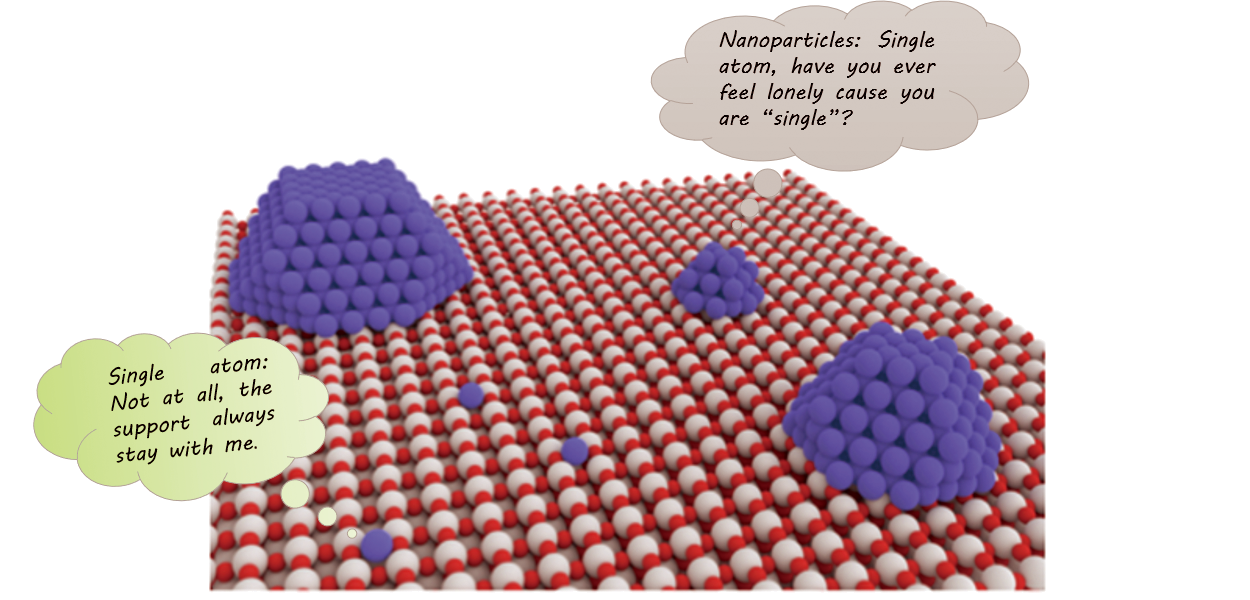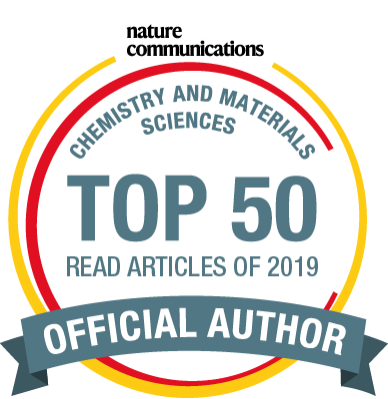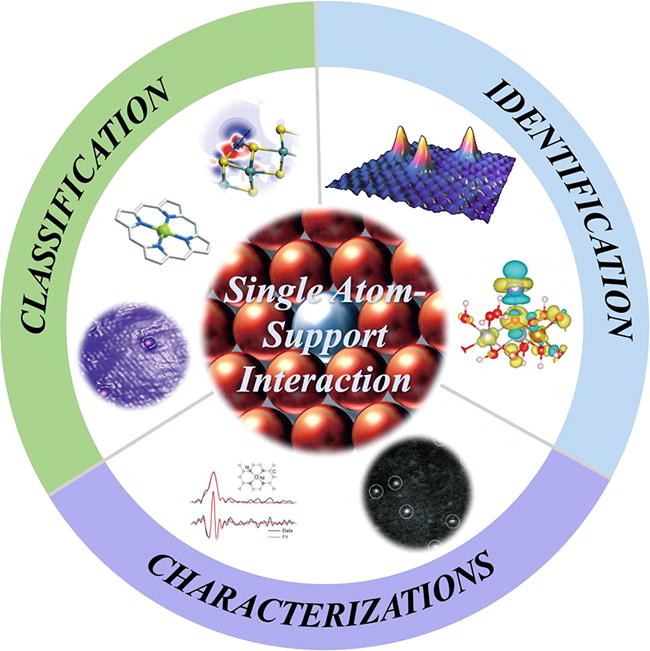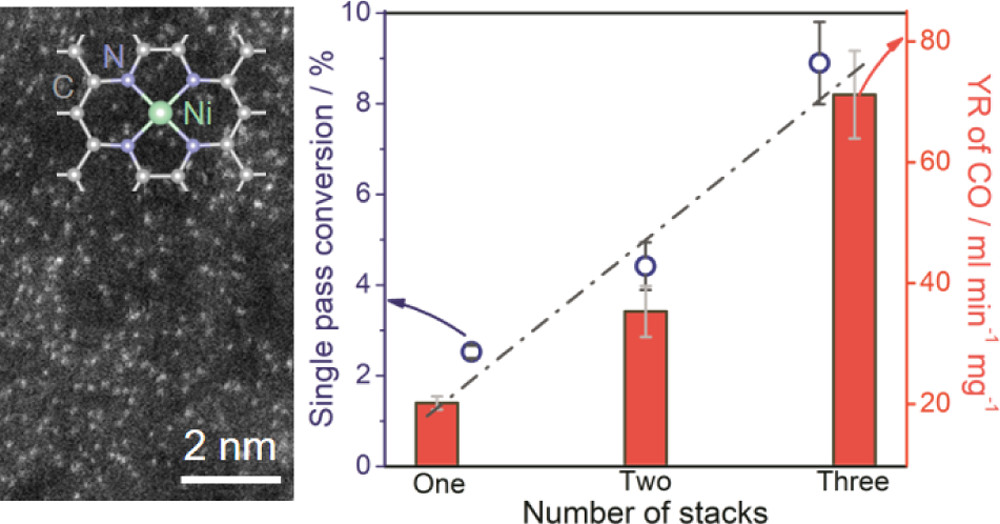Single-atom is not alone
Published in Chemistry

The link for paper in Nature Communications is here:
Single-atom cobalt array bound to distorted 1T MoS2 with ensemble effect for hydrogen evolution catalysis

When the metal active center is dispersed to the single-atom scale, thanks to the boosted surface free energy, unsaturated coordination environment and the interaction of the metal-support will give the single-atom catalyst novel properties. The atomically dispersed active center not only significantly improves the utilization efficiency of metal atoms, but also changes the energy and selectivity of the adsorption and desorption of reaction molecules on the catalytic center. In traditional single-atom catalysts, it is difficult to avoid the re-aggregation of metal atoms. What's more important, the ambiguous relationship of the interaction between the metal atom and support remarkably limited the improvement of catalytic performance.
Here, for the first time, we reported a new strategy (assembly/leaching) for the preparation of single-atom catalyst.[1] By applying the strong chemical interaction between two counterpart 2D materials, cobalt nanodisks were successfully assembled onto the surface of molybdenum disulfide nanosheets, following by the leaching process with acid to obtain the high loading metal cobalt single-atom array on distorted metal phase molybdenum disulfide (SA Co-D 1T MoS2).

SA Co-D 1T MoS2 exhibits outstanding hydrogen evolution reaction activity (as good as commercial Pt) and excellent long-term stability. The active site block experiment reveals that the single-atom Co is the principal catalytic center, although both single Co atom and 2H to D-1T phase transformation of MoS2 are also contributory to HER catalysis. DFT calculations further confirmed that the high HER activity of this single-atom catalyst is mainly owing to an ensemble effect via the synergy of Co adatom and S of the MoS2 support by tuning hydrogen-bonding mode at the interface of the catalyst. The discovery of this SA Co-D 1T MoS2 catalyst highlights the area of tuning the structure and functionality of metal-TMD catalysts at the atomic scale, which holds great promise for applications in large scale water splitting electrolyzers.
This work cannot be done without the valuable collaborative efforts from Prof. Xiaoqiang Cui (Jilin University), Prof. Weitao Zheng (Jilin University), Prof. Shaojun Guo (Peking University), Prof. Lin Gu (Institute of Physics, CAS), Dr. Jingyuan Ma (Shanghai Institute of Applied Physics, CAS), Prof. Lirong Zheng (Institute of High Energy Physics, CAS), Prof. Wei Zhang (Jilin University) and Prof. Ping Liu (Brookhaven National Laboratory).
You can read more about the study in Nature Communications.

The research was selected as Top 50 Chemistry and Materials Sciences Articles for Nature Communications published in 2019
You can also find more from our latest online review article in Materials Today.[2]
The link for paper in Materials Today is here:
Single atom is not alone: Metal–support interactions in single-atom catalysis
The review explores the current state of the art in single-atom catalysis and critically analyzes the current understanding of metal–support interactions. As an outlook for the field, at the end of the review, we highlighted a few key remaining challenges for SACs that are urgently needed to be solved.

Identification, classification, and characterization of single atom and support interaction
Our latest research on single atom Ni for CO2RR in flow electrolyzer was online at ACS Catalysis.[3]
The link for paper in ACS Catalysis is here:
The single atom Ni catalyst achieves energy efficiencies as high as 85% at jCO = 7.2 mA cm–2 and 56% at jCO = 170 mA cm–2, whereas the single-pass CO2-to-CO conversion efficiency reaches 2.6% cm–2. Also the scalability of the flow electrolyzers by stacking three 1 cm2 reactors and reached a record-high CO yield rate of 31.5 L min–1 m–2 with near-unity CO selectivity and an SPCC of 8.9% from three.

Find me on my twitter @Atome_Kun and our research group twitter @VoiryGroup to discuss more this paper and more works about novel two-dimensional material and renewable energy.
Reference:
1. Qi. K. et al. Single-atom cobalt array bound to distorted 1T MoS2 with ensemble effect for hydrogen evolution catalysis. Nature Communications. 10, 5231 (2019).
2. Qi. K, Chhowalla. M, Voiry. D. Single atom is not alone: Metal–support interactions in single-atom catalysis. Materials Today. 10.1016/j.mattod.2020.07.002.
3. Zhang. Y, Qi. K, Voiry. D. et al. 2.6% cm–2 single-pass CO2-to-CO conversion using Ni single atoms supported on ultra-thin carbon nanosheets in a flow electrolyzer. ACS Catalysis. 11, 12701-12711 (2021).
Follow the Topic
-
Nature Communications

An open access, multidisciplinary journal dedicated to publishing high-quality research in all areas of the biological, health, physical, chemical and Earth sciences.
Related Collections
With Collections, you can get published faster and increase your visibility.
Women's Health
Publishing Model: Hybrid
Deadline: Ongoing
Advances in neurodegenerative diseases
Publishing Model: Hybrid
Deadline: Mar 24, 2026


Please sign in or register for FREE
If you are a registered user on Research Communities by Springer Nature, please sign in